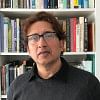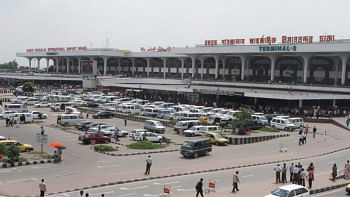Forging a Bengali identity through modernist architecture

After completing his Bachelor of Architecture degree at the University of Oregon, Eugene, in June 1952, the 29-year-old Muzharul Islam (1923-2012) returned home to find a embroiled in acrimonious politics of national identity. The fragility of the pan-Islamic polity that sought to consolidate the impossible geography of Pakistan was evident. The religion-based, two-nation partition of the Indian Subcontinent into India and Pakistan was designed to create two separate domains for Hindus and Muslims, respectively. Yet, Muslim Pakistan was already in trouble soon after the 1947 Partition. The newly minted country's two regions – East and West Pakistan, separated by almost 1,000 miles of Indian territory – were themselves on a collision course because of their asymmetric power relationship, different languages, and, most of all, conflicted attitudes regarding how their divergent ethnicities and Islamic nationalism intersected. The country's political power was centred on West Pakistan. This lopsided power structure was further exacerbated by an ideological difference. The ruling elites of West Pakistan embraced a brand of political Islam that would not only work as an ideological buffer against the perceived threat of Hindu-majority India but also unify the different ethnic groups of Pakistan with an overarching Islamist spirit. Such a state policy alienated many secular-minded Bengali leaders, intellectuals, and professionals. They were drawn more to a mediating relationship between a humanist Bengali tradition and faith than to Pakistan's geostrategic patronage of Islamic nationalism.
In February 1952, less than a year before Muzharul Islam arrived home from the United States, the police opened fire on agitated East Pakistanis who were protesting on the streets of Dhaka. The people of East Pakistan demanded the right to speak their language Bangla, not Urdu – the language of the ruling elite in West Pakistan and proposed as the national language of Pakistan to consolidate the fragile state. Several Bengalis, including students, killed during the political demonstration on February 21, 1952, in Dhaka, were lionised as martyrs of the Language Movement in East Pakistan (now Bangladesh).
The turbulent politics that Muzharul Islam found himself thrust into influenced his worldview, as well as his fledgling professional career. He interpreted the prevailing political conditions in his homeland as a fateful conflict between the secular humanist ethos of Bengal and an alien Islamist identity imposed on the Bengalis by the Urdu-speaking ruling class in West Pakistan. The young architect began his design career in the midst of bitterly divided notions of national origin and destiny. It was not surprising that his architectural work would reflect this political debate. Many secular-minded Bengalis felt the need to articulate their national identity on ethno-cultural grounds, rather than on a supra-religious foundation championed by West Pakistani power-wielders. Muzharul Islam's Institute of Fine Arts (1953-55) at Shahbagh, Dhaka, embodied these beliefs.
The meagre literature on South Asian modern architecture generally identifies the Faculty of Fine Arts as the harbinger of Bengali modernism – a sort of Bengali Villa Savoye, synthesising a modern architectural vocabulary with climate-responsive and site-conscious design programmes. However, what has not been examined in this iconic building is how Islam's work also provides an intriguing cultural foil against which his architectural experiments with modernist aesthetics could be viewed as part of his inquiries into the ongoing politics of Bengali nationalist activism.
While the Franco-Swiss architect Le Corbusier's influence on the Institute of Fine Arts is palpable, Islam's iconoclastic building sought to achieve two distinctive goals.

First, the building introduced the aesthetic tenets of modern architecture to East Pakistan. For many, its design signalled a radical break from the country's prevailing architectural language for civic buildings – built either in an architectural hybrid of Mughal and British colonial traditions, popularly known as Indo-Saracenic, or as utilitarian corridor-and-room building boxes, delivered by the provincial government's Department of Communications, Buildings, and Irrigation (CBI). The Faculty of Fine Arts could not be a more unambiguous departure from, say, the colonial-era Curzon Hall (1904-1908) at Dhaka University, within walking distance of Islam's building, or the Holy Family Hospital (1953; now Holy Family Red Crescent Medical College Hospital).
Second, the Institute of Fine Arts' modernist minimalism – rejecting all ornamental references to Mughal and Indo-Saracenic architecture – was a conscious critique of political Islam that became a state apparatus for fashioning a particular religion-based image of postcolonial Pakistan. By abstracting his design through a modernist visual expression, Muzharul Islam sought to purge architecture of what he viewed as the political blemishes of instrumental religion. However, to see his modernism as a Western import or an aesthetic remedy for a local challenge would be to reduce both modernism and ongoing Bengali identity politics into isolated instances of parochial simplicity. The faculty's modernism hinges on Muzharul Islam's dual commitment to a secular Bengali character and universal humanity – a post-nationalist worldview rooted in the enlightenment ideals of the Bengali poet Rabindranath Tagore (1861-1941) – as well as his own education in both the East and West. In a Tagorian disposition, Islam refused to see any ideological conflict between Bengali mythos and modern notions of progress and universality.
I, however, dismisses any overarching idea that during the post-Partition ideological battle of identity politics that engulfed Pakistan, neither politics nor architectural practices in East and West Pakistan were neatly aligned with secular and Islamicist orientations. As Muzharul Islam struggled to find a modernist architectural language that would resist religious nationalism, so did many first-generation West Pakistani architects who were also caught up in uneasy debates concerning modernity and tradition, Anglo-American influence, and Islamic heritage, and how these constructs intersected with their idea of Pakistan. Yet, what makes Islam's work particularly interesting is that his architectural search sprang forth from a peculiar political predicament resulting from the inversion of the very pan-Islamic argument that was used in the creation of Pakistan. His search needed to engage the realpolitik of the Language Movement and Bengali soul-searching that marked the social climate in East Pakistan in the early 1950s when he returned from the US.
Adnan Zillur Morshed is an architect, architectural historian, urbanist, and professor. He teaches at the Catholic University of America in Washington, DC, and is Executive Director of the Centre for Inclusive Architecture and Urbanism at BRAC University. This essay serves as the introduction to a longer article published earlier in the Journal of the Society of Architectural Historians in 2017.

 For all latest news, follow The Daily Star's Google News channel.
For all latest news, follow The Daily Star's Google News channel. 




Comments